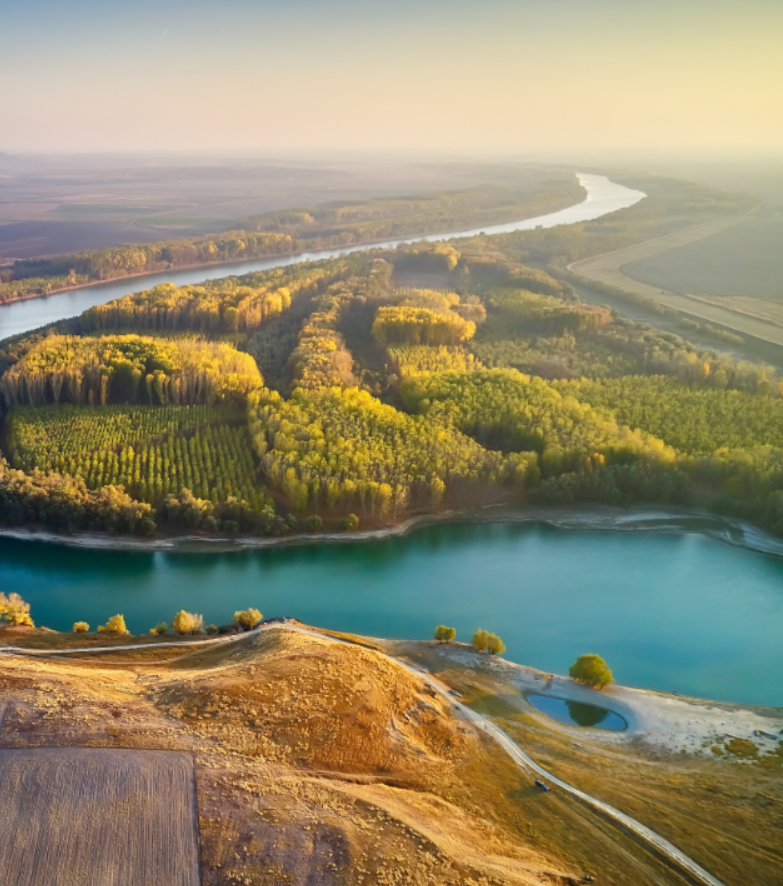- UNITS
- Unit 10 - Streams, Rivers & Lakes
- The Game of Words
- Prof. Xue and Luk's Conversation
- An Active Reader
- Asking Questions
- Language Knots
- Test Corner
- LEARNING

♦ This introductory exercise aims to give you a feel for the sound and rhythm of the language, whilst presenting an overview of the maritime topic at hand. ♦ By reading and then listening to the accompanying audio, you’ll discover how words are pronounced and some simple sentence structures. ♦ Once you are comfortable with how the written and spoken words are connected, you’ll be ready to focus on keywords in the next exercise.
Streams, Rivers and Lakes
This topic will cover the geography of freshwater. Freshwater is just 3% of the world’s water and it is vital for most of the world’s living organisms. For every 6,750 litres of the world’s ocean water there’s just one litre in rivers and lakes. Still, rivers and lakes are fundamental to human civilisation, in ancient times and today. We can start up in the mountains with streams.
Streams are bodies of water with current and constant motion. We use different names for streams depending on their size, speed, depth, and location, these include creeks, brooks, tributaries, even rivers are a type of stream. A stream starts at its source, this is usually up in high mountains from melting snow. When two streams join there is a confluence, the smaller stream is called the tributary.
As more and more confluences meet, a river will form, this is the largest stream and carries the most water. Upland rivers are usually fast-moving on steeper land, lowland rivers flow slowly across flat land. Where the river meets a larger and still body of water is called the mouth of the river. If the larger body of water has a tide, this meeting point is called an estuary. Saltwater and freshwater mix here, this creates brackish water, interesting ecosystems are often found in estuaries.
A divide is a high point in the land, or ridge, where water flows down from one side or the other side. The land area to one side of a divide is called a water basin. Great mountain ranges can be the divides for whole continents, their drainage basins cover whole countries.
Not all water constantly flows though. Ponds are small freshwater bodies that are surrounded by higher land, they have no stream or river flowing out. An underground spring usually fills them from beneath. Lakes are larger bodies of water, water can leave lakes by a downhill river and through evaporation. Large lakes can have tides, currents and affect the local weather. Lakes can begin from glaciers, on the edge of continents, or even in the craters of volcanoes.
The ecosystems of oceans and lakes can be split into three zones. There’s the surface zone, at the edge of the water and air, plants and insects can live here; the open-water zone, underwater where there is lots of light still, fish and some plants live here; and the deep-water zone, where there is little or no light left, crabs and scavengers tend to live here at the bottom.
Wetlands are areas of land that regularly hold lots of water, and they tend to have rich and diverse ecosystems. Marshes are shallow wetlands around the edge of rivers and oceans, and often contain saltwater. Swamps have more trees and are found next to slow-moving rivers, the water moves so slowly that there is less oxygen in it.
Floods happen when too much water flows quickly to one place. The land can be covered in water in even a few hours, in disasters this can destroy people’s property and lives.
